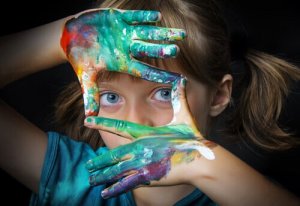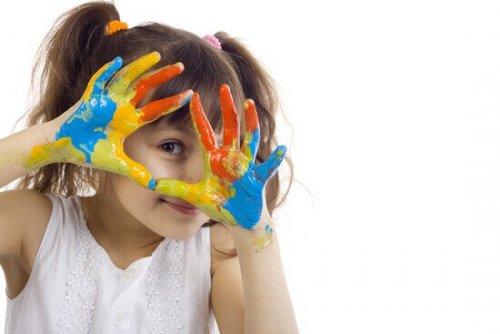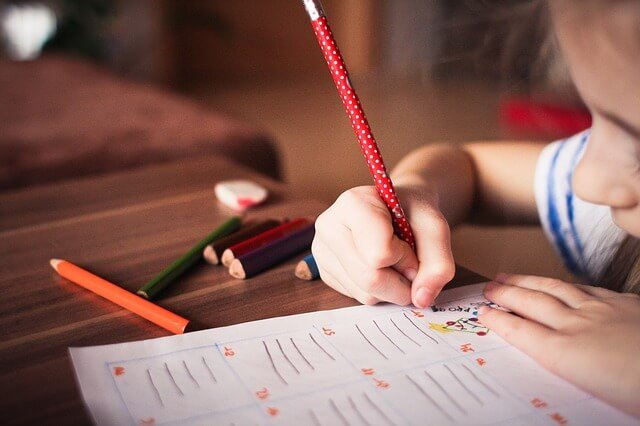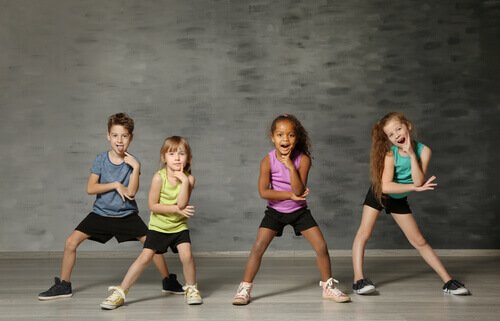Five Art Therapy Exercises for Kids

Kids are voracious explorers and always express their motivation to learn and discover new things. They live in a magical world where discovery reigns. Art therapy, therefore, can be a great tool for therapists to help children live their best lives.
Children’s curiosity shapes their potential for creativity. It’s easy for them to invent things and come up with new ideas. We see that reflected in their questions and the games they invent. Their imagination is precious and helps them enjoy everything even more.
Children’s creativity can have many outlets, including art. Through the creative process, kids can learn, explore, experience new feelings and perceptions, be inspired, learn how to cope with difficult situations, and improve their attention span, motor skills, and visual-spatial skills.
It’s easy to believe that children don’t have problems, but that isn’t true. They also have fears and worries. The difference is that they express them in different ways. Art therapy exercises help promote self-expression and problem-solving.
Next, we’ll take a look at five interesting art therapy exercises for kids. These exercises help strengthen their creative world and also make it easier for them to express their biggest worries.

The magic of mandalas
Mandalas are sacred circles from eastern cultures. These days, they’re popular on a global scale. There are different approaches to using them with children:
- Color mandalas: Kids can decorate or color existing mandalas to help them feel calm and relaxed.
- Create and decorate mandalas: If a child is old enough to draw with some accuracy, they can make their own mandala and then decorate it. Not only does this activity relax children, but it also stimulates their creativity.
- Mandalas and mindfulness: The therapist invites the child to pay close attention to the creative process. To do that, the therapist uses elements that favor that kind of environment, like relaxing music.
The reason why mandalas are so magical is that they help children connect to their deepest thoughts and emotions. With mandalas, kids can express how they feel and improve their creative and visual-motor skills at the same time. What’s more, the art therapist can use their work to analyze the child’s thoughts and feelings.
Coloring mandalas is an art therapy exercise for kids that encourages relaxation and peacefulness.
Visual arts
Visual art exercises are wonderful for children. By using photographs or drawing, kids make their own works of art. During the process, they explore different feelings and ideas. The possibilities are endless, but here are some ideas to get you started:
- Photos: The child can get to know themselves by choosing different photos of themselves and the world. The art therapist can analyze how the child chose the photographs and how they relate to the child’s conflicts.
- Paintings: Children can use painting as their creative outlet. Without even realizing it, paintings show what’s going on in their inner world. What’s more, an art therapist can paint with very small children to help stimulate their senses. Finger painting is a great way to stimulate different parts of the brain at the same time.
- Collages: Creating a collage can foster creativity. Not only that, but it’s also a great outlet for a child’s thoughts and feelings.
- Sculptures: An art therapist can offer the child clay or the child can even make “living sculptures” with their bodies to express thoughts, situations, and certain feelings.
All of these exercises can help kids release tension and change their perspective. Therapists can even suggest that the child do the same work over again as a representation of change. Consequently, their problems take another shape and it’s easier for them to find new paths.
“It took me four years to paint like Raphael, but a lifetime to paint like a child.”
-Pablo Picasso-
The world of writing
To use writing with kids, the therapist has to make sure to keep their age in mind when planning activities. One possible exercise is to ask them to write down a description of themselves. Once they’re done, the therapist discusses each trait more in-depth. They can also ask the child if they’d like to change or improve or not.
Another writing art therapy exercise is writing stories. Children create a story and pay attention to each character and the setting. Then, the art therapist talks about each aspect of the story with the child. They ask the child to associate the characters with real people that they know. They do the same with the places and activities in the story. This can allow the therapist to know what’s happening to the child and how to help them solve their problems.
As you can see, therapist-guided writing is great for kids’ attention, creativity, and emotional release.
“Writing is the painting of the voice.”
-Voltaire-

Movement
Through movement, kids can integrate their emotional, cognitive, and physical bodies. Not only that, but it helps with their spatial orientation and strengthens creativity. It does wonders for their mood as well because exercise and movement release endorphins and make it easier for them to express their emotions and ideas.
- Theater: Kids can use reenactment to express what’s happening to them. Therapists often use theater and drama to help kids find solutions to their problems. Being in character can help them think outside the box.
- Dance: Dancing has incredible therapeutic powers because it helps children channel their emotions. Through dance, they can connect to themselves and foster body awareness.
The power of music
Music has the ability to connect you to your deepest emotions. That’s why it’s so wonderful to use music for art therapy. Here are some examples of music art therapy:
- Music and reflection: For this exercise, the child must explore their deepest thoughts with music in the background. Afterward, the child and the therapist analyze the process so that the child can integrate their physical, emotional, and cognitive experiences.
- Composition: For this exercise, kids use their ingenuity to compose a song that reflects what they think and feel. After they compose the song, they should sing it or at least talk about it. In one part of the session, they can even re-think or re-write the song as a symbol of conflict resolution.
- Singing: Through song, children can express what they’re feeling in a really fun way. For example, they might choose songs that they identify with and explore their feelings with a workgroup or the therapist.
Music helps solve emotional problems, strengthens creativity, and encourages socialization. Not only that, but it enhances attention, memory, and helps children structure language. It’s an unrivaled therapeutic tool.
“Music is a moral law. It gives a soul to the universe, wings to the mind, flight to the imagination, a charm to sadness, and life to everything.”
-Plato-

Benefits of art therapy for kids
- Art therapy enhances creativity.
- It allows kids to express their thoughts and feelings.
- Art therapy encourages the integration of psychological, physical, and social aspects.
- It enhances executive functions like attention, memory, and spatial orientation.
- It improves language.
- Art therapy encourages self-awareness.
- It helps kids work better in groups.
- It makes children feel safe and heard.
- Art therapy encourages exploration.
- It helps increase self-confidence.
- It fosters good communication.
- Art therapy helps children make better decisions.
- It helps children cope with their problems.
- Art therapy improves motor skills.
Art therapy is one way to increase a child’s well-being. It allows children to learn how to express themselves, solve conflicts, and handle problems in fun ways.
This text is provided for informational purposes only and does not replace consultation with a professional. If in doubt, consult your specialist.








